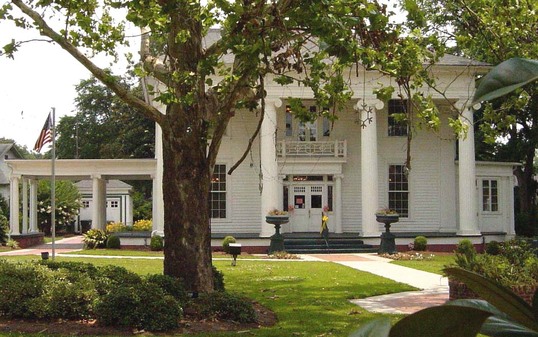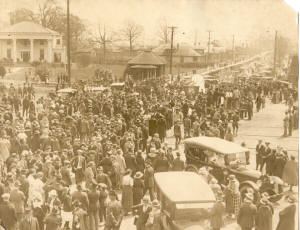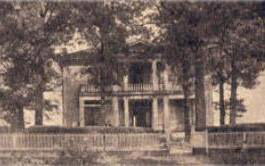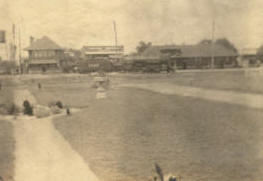
Our Home: The Troutman House
|
The Troutman House in its original location, several thousand yards southeast of its present location in a grove of trees surrounded by pasture lands. |
|
View from porch shows trains at station |
The Troutman House, circa 1855, is an example of Greek Revival style architecture and was one of the first larger stately homes built around Fort Valley. The original owner is thought to have been Colonel John Fielding Troutman Sr., who was a state senator and served on the staff of Governor Howell Cobb.
The historic Troutman House is located at the confluence of Georgia Hwy. 49, Georgia Hwy. 96 and Commercial Heights Blvd. in Fort Valley, Ga.
The house originally sat several thousand yards southeast of its present location (approximately where the Dairy Queen is now located on South Main Street) in a grove of trees surrounded by pasture land. After Troutman Sr. died in 1905, his son, John F. Troutman Jr. had the house moved to its present location. It is believed this transfer took place between 1906 and 1920 and helped provide a way to fully develop what is now known as the subdivision of Oakland Heights. The lot was originally four acres of land, and the home looks as if it stands at the end of Main Street, giving it a dramatic perspective and grand appearance.
Like many other stately homes, the Troutman house fell into disrepair over the years. However, the home has undergone an extensive renovation and now serves as home to the Downtown Development Authority, the Georgia Peach Festival, the Welcome Center and the Peach County Development Author
The Peach Blossom Festivals, which were staged in Fort Valley from 1922 to 1926, took place right beside and behind the Troutman house.
 These festivals brought as many as 50,000 people to see the "peach capital of the world." The Troutman House still serves as a reminder of Fort Valley's earlier history and represents a vital part of the city's culture.
These festivals brought as many as 50,000 people to see the "peach capital of the world." The Troutman House still serves as a reminder of Fort Valley's earlier history and represents a vital part of the city's culture.
National Geographic writer Ralph A. Graves described the festival in the September 1926 issue. He wrote of the event as "a colorful, magnificently staged historical pageant ... which now attracts thousands to this progressive little town in the heart of the peach belt."


